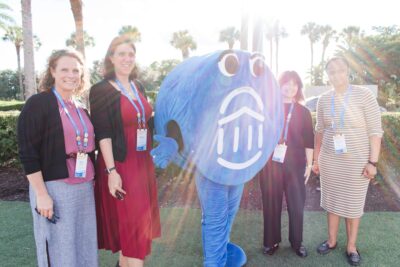What the OBBB and the new Carnegie classification could mean for higher education accountability
With pressure mounting for colleges to prove their value, a new federal proposal could mark a turning point. While its passage remains uncertain, the One Big Beautiful Bill Act (OBBB) represents a potentially seismic shift in how the government defines and supports student success. Most notably, the Senate version of the bill proposes holding colleges accountable for the earnings of former students who received federal financial aid.
The core principle is simple but consequential: if a college program is funded with federal aid, it should deliver an earnings premium above that of a high school diploma. Programs where former students earn less than the median high school graduate in their state risk losing the ability to distribute federal financial aid to students.
As a researcher focused on the future of higher education, I spend a lot of time modeling how policy changes like those proposed in the bill might reshape the landscape. In this blog, I’ll explore the practical challenges colleges may face if the OBBB advances—and what you can do now to get ahead of them.
What we know about OBBB so far (as it relates to higher ed):
The current version of OBBB includes a provision to measure student earnings three years after they leave an institution. To remain eligible for federal aid, a program must surpass high school median earnings in at least two of those three years.
As of June 30th, 2025, the revised bill text no longer includes non-completers in this calculation. The updated “do no harm” standard would bar new federal loans for:
- Undergraduate programs where the majority of completers earn less than the median high school graduate in the same state.
- Graduate programs where the majority of completers earn less than the median bachelor’s degree recipient in the same field and state.
This marks a shift from earlier language, which applied the standard to a broader category of “former students,” including those who stopped out.
Carnegie’s new earnings framework offers a preview
Although the OBBB lacks detailed implementation language, we can draw guidance from a similar framework. The bill’s approach mirrors the new Carnegie Student Access and Earnings Classification (SAEC), released by the American Council on Education (ACE) this April. Both systems assess the earnings of all former students—including non-completers—several years after they leave the institution. Both rely on College Scorecard data, which aggregates tax records for students who received financial aid to calculate program-level earnings. And both compare the earnings of former students to the median earnings of a typical adult living in the colleges’ geographic region of focus.
Learn What the New Student Access and Earnings Classification Means for Your Institution
Because the two models align so closely, we can use the Carnegie framework to anticipate the likely impact of the bill. Fortunately, ACE has made the full methodology and dataset behind the new Carnegie classification publicly available, giving colleges a valuable preview of how an earnings-based accountability model could function in practice.
Two key insights emerge from the Carnegie classification that can help us understand how the OBBB might play out:
-
There’s a time lag in the data
There is a two- to three-year lag in College Scorecard data. The most recent year available for the 2025 Carnegie classification was 2022. Factoring this lag into the bill’s formula, colleges could see their aid eligibility determined by the earnings of students who left up to six years prior. That means that if the bill were in effect today, your college would be judged on the earnings of students who completed or departed in 2019.
-
Completion matters more than field of study
ACE found that program completion has the greatest influence on post-college earnings, more so than the field of study. The earnings difference between a graduate and a nongraduate is greater than the difference between a graduate in a high-paying field and a low-paying field. Importantly, because non-completers are included in the calculations for SAEC, the most effective way to improve a program’s earnings profile will be to re-enroll and graduate stop-out students.
Which programs and institutions are most vulnerable?
While full implementation details are still emerging, the current language suggests that certain types of institutions and academic programs may be disproportionately impacted. Programs at open-access and rural colleges where earnings outcomes often reflect broader labor market limitations may face greater risk. Similarly, high-cost, low-earning fields such as the arts or social work could also be flagged under the bill’s earnings threshold, despite their social value.
That said, it is important not to over-index on this structure. Many of the programs most at risk are at politically popular community colleges or concentrated in rural or Republican-leaning regions with significant political influence. These dynamics could lead to policy revisions or exceptions during the legislative or rulemaking phases, as lawmakers seek to mitigate unintended consequences.
3 ways you can prepare for earnings-based accountability
As policymakers move toward linking federal aid eligibility to student earnings, institutions must rethink how they define and support student success. Here are three strategies colleges can adopt to prepare for this shift:
1. Make stop-out reenrollment a real priority
Many colleges have initiatives to bring back students who left without a degree, but few have treated it as a core part of their strategy. That may need to change. Students who don’t complete their programs tend to earn less. Institutions can start by building systems that make it easier for these students to come back and finish what they started. That could include personalized outreach, flexible course offerings, and support to help them navigate their return.
2. Help graduates in lower-paying jobs advance
Some fields simply don’t lead to high salaries right after graduation. But that doesn’t mean those programs can’t show strong outcomes over time. Colleges can reach out to graduates in those fields and offer ways to grow their careers, whether through job placement help, alumni networks, or short-term training options that open doors to higher-paying roles. Being more active in helping these students advance can make a real difference when their earnings are reviewed down the road.
3. Expand career services after graduation
Career advising can’t stop at graduation anymore. If earnings are going to be tracked for several years after students leave, colleges will need to stay involved longer. That might include checking in with alumni, helping them take the next step in their careers, or creating partnerships with employers that offer pathways to advancement. The more support students receive after they leave campus, the more likely their outcomes will reflect well on the institution.
Don’t wait—the investment pays off either way
Colleges don’t need to wait for a final vote on the OBBB to take meaningful action. Even if the bill does not pass, some form of post-college earnings accountability seems increasingly likely. Similar proposals have surfaced in recent years, and the Senate version has broader support than previous efforts. Independent frameworks like Carnegie are moving in the same direction. Given these trends, colleges should expect some sort of earnings accountability soon.
There is good reason to get started right away. The time lag in data means that outcomes from this year may determine financial aid eligibility in future years. Thus, action taken now is an investment that will pay off when new rules take effect. Institutions that move quickly will be better positioned, while waiting could mean falling behind
And even if no formal accountability system emerges, the upside remains the same. Improving completion rates, re-enrolling former students, strengthening career support—these efforts lead to better jobs for students, stronger reputations for institutions, and a more resilient enrollment strategy. The investment is worth it, with or without a mandate.

More Blogs

Three lessons from 1,200 student success leaders on higher ed’s future

What are students asking university chatbots?
